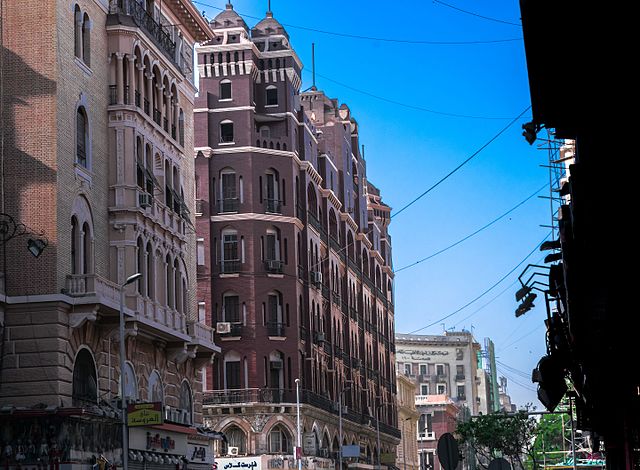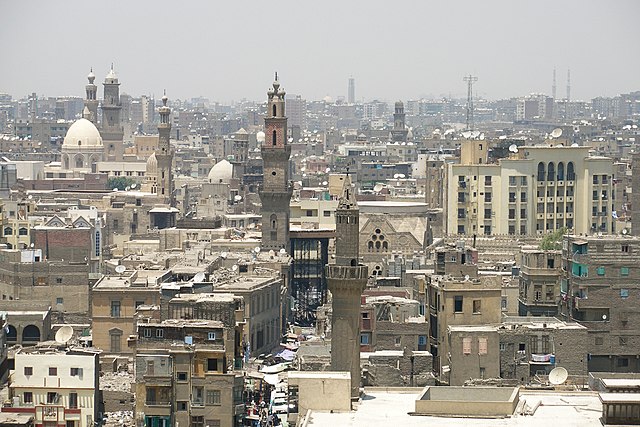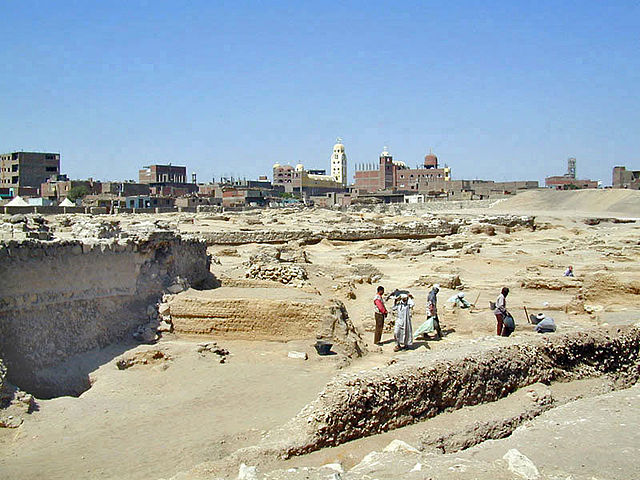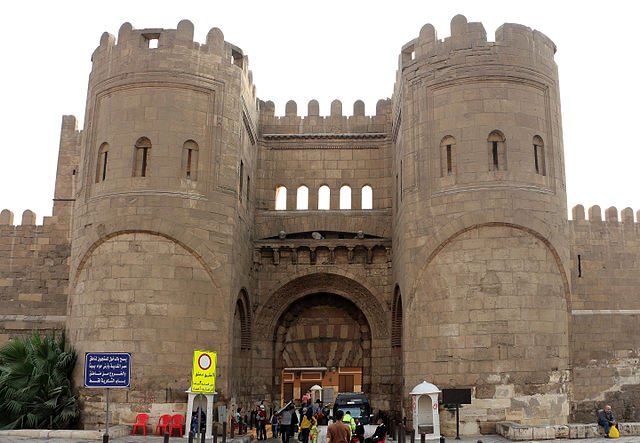Downtown Cairo is the colloquial name given to the 19th-century western expansion of Egypt's capital Cairo, between the historic medieval Cairo, and the Nile, which became the commercial center of the city during the 20th century. Given its rich architectural heritage from the era of Khedive Ismail, it has been officially named Khedival Cairo and declared by the government as a protected Area of Value, with many of its buildings also deemed protected. Administratively Wust al-Balad covers areas of qism Qasr al-Nil, and the Abdeen and Ezbekia districts. The protected Khedival Cairo covers a larger area extending south to Sayida Zeinab.
Talaat Harb Square, the heart of Downtown Cairo
Shurbagi building
Image: J.Groppi
Image: Cairo Talaat Harb Groppi Detail
Islamic Cairo, or Medieval Cairo, officially Historic Cairo, refers mostly to the areas of Cairo, Egypt, that were built from the Muslim conquest in 641 CE until the city's modern expansion in the 19th century during Khedive Ismail's rule, namely: the central parts within the old walled city, the historic cemeteries, the area around the Citadel of Cairo, parts of Bulaq, and Old Cairo which dates back to Roman times and includes major Coptic Christian monuments.
Islamic Cairo
The excavated remains of Fustat in 2009
The Mosque of Ibn Tulun, built in the 9th century. It is a rare and outstanding example of preserved Abbasid architecture outside Iraq.
Bab al-Futuh, one of the northern gates of Cairo built by the Fatimid vizier Badr al-Jamali in the late 11th century








